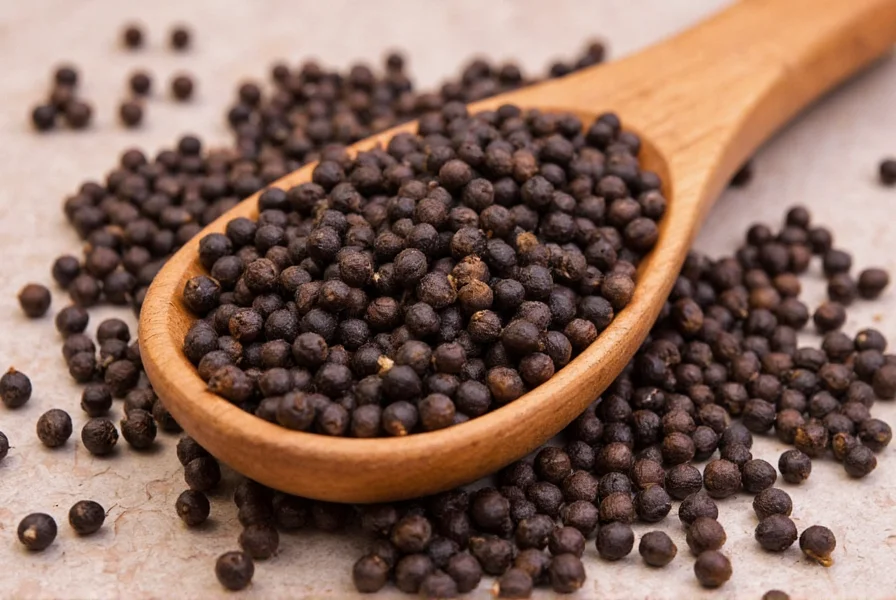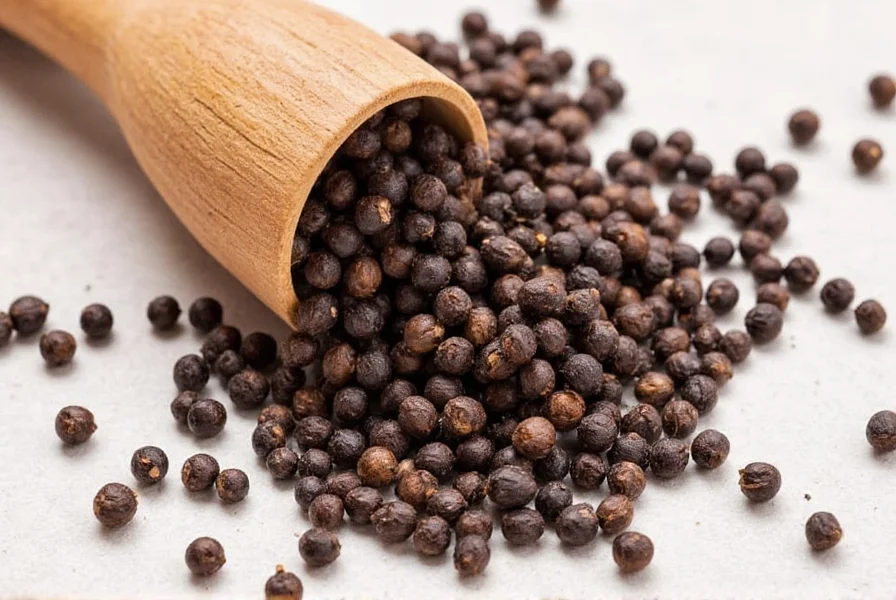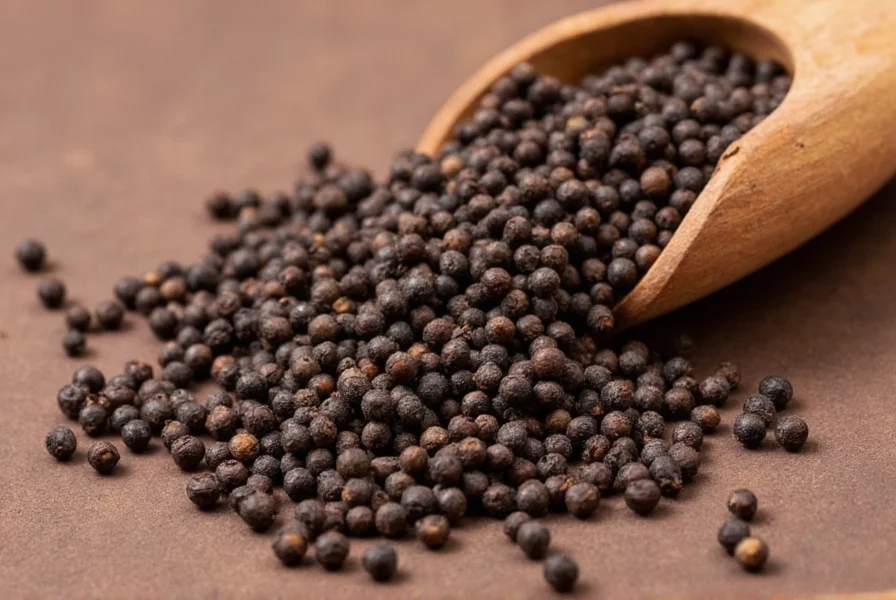For centuries, black pepper spice has earned its place as the "king of spices" across global cuisines. This versatile seasoning isn't just a table condiment but a foundational flavor builder that interacts uniquely with other ingredients. Understanding its properties helps home cooks and professional chefs alike maximize its culinary potential.
Origins and Historical Significance
Black pepper (Piper nigrum) originates from the Malabar Coast of Kerala, India, where it's been cultivated for over 3,000 years. Historical records show peppercorns were so valuable in ancient Rome they were used as currency and accepted as collateral. The spice fueled global exploration, with European powers establishing trade routes specifically to access this precious commodity. Unlike many spices that fell in and out of favor, black pepper maintained consistent demand due to its unique ability to preserve food and enhance flavors in an era before refrigeration.
From Vine to Spice: The Production Process
Black peppercorns begin as green berries on flowering vines. Harvesters pick them just before full ripening when they're still green but beginning to turn yellow. The critical step that creates black pepper involves sun-drying these berries for 6-10 days, during which enzymatic reactions cause fermentation. This process develops piperine—the compound responsible for pepper's characteristic heat—and transforms the berries from green to dark brown or black.
Compare this to other pepper varieties:
| Pepper Type | Processing Method | Flavor Profile | Best Culinary Uses |
|---|---|---|---|
| Black Pepper | Sun-dried unripe berries | Sharp, pungent, complex earthiness | Most savory dishes, grilling, roasting |
| White Pepper | Ripe berries with outer layer removed | Milder, earthier, less complex | Cream sauces, light-colored dishes |
| Green Pepper | Unripe berries preserved in brine/vinegar | Fresher, more herbal notes | Asian cuisine, seafood, delicate sauces |
Understanding Black Pepper's Flavor Chemistry
The magic of black pepper spice lies in its complex chemical composition. Piperine (5-9%) provides the signature heat, while terpenes and other volatile compounds contribute floral, piney, and citrus notes. When heated, these compounds interact with fats and proteins in food, creating new flavor compounds that enhance umami perception. This explains why freshly cracked black pepper works better in cooked dishes than pre-ground versions—the volatile aromatics dissipate quickly after grinding.
For optimal flavor development in cooking:
- Add whole peppercorns early in slow-cooked dishes to allow gradual flavor release
- Crack pepper just before use for maximum aromatic impact
- Pair with fats (olive oil, butter) to help distribute flavor compounds evenly
- Use in combination with salt to create a synergistic flavor enhancement

Nutritional Profile and Potential Health Benefits
While primarily used as a flavoring agent, black pepper spice offers notable nutritional components. One tablespoon (6g) contains approximately:
- 16 calories
- 1g dietary fiber (4% daily value)
- 14% manganese
- 10% iron
- Significant piperine content
Research suggests several potential health benefits of black pepper spice, particularly when combined with other foods:
- Enhanced nutrient absorption: Piperine increases absorption of selenium, B vitamins, and beta-carotene by up to 200%
- Antioxidant properties: Contains multiple compounds that combat oxidative stress
- Digestive support: Stimulates digestive enzyme production in the pancreas
- Thermogenic effect: May modestly increase metabolic rate when consumed regularly
These health benefits of black pepper spice work best when consumed as part of a balanced diet rather than in isolated supplement form.
Practical Culinary Applications
Mastering how to use black pepper in cooking transforms ordinary dishes into exceptional ones. Professional chefs employ several techniques:
- Layered seasoning: Add pepper at multiple stages of cooking for complex flavor development
- Pepper infusions: Steep whole peppercorns in cream, oil, or vinegar for subtle background notes
- Finishing touch: A light sprinkle of freshly cracked pepper adds aromatic complexity to finished dishes
- Meat preparation: Coarse pepper forms a flavorful crust when seared on meats
Different dishes benefit from specific black pepper preparations:
- Steaks and grilled meats: Coarse cracked pepper
- Cream sauces: Fine grind for even distribution
- Soups and stews: Whole peppercorns removed before serving
- Salad dressings: Medium grind for texture and flavor release
Storage Methods for Maximum Freshness
The best way to store black pepper spice preserves its volatile aromatic compounds. Light, heat, and oxygen are the primary enemies of pepper quality. For optimal shelf life:
- Store whole peppercorns in airtight containers away from heat sources
- Keep containers in a cool, dark cupboard (not above the stove)
- Grind pepper immediately before use for maximum flavor impact
- Discard pre-ground pepper after 4-6 months (whole peppercorns last 1-2 years)
Many home cooks don't realize that humidity significantly impacts pepper quality. In humid climates, consider storing peppercorns with a food-safe desiccant packet to prevent moisture absorption, which accelerates flavor loss.

Substitutions and Alternatives
When black pepper isn't available, understanding suitable alternatives prevents recipe failure. The difference between black pepper and white pepper matters in certain applications:
- White pepper: Use in light-colored sauces where black specks would be visible
- Long pepper: Offers more complex, sweet-heat notes for historical recipes
- Cubeb pepper: Provides similar heat with subtle berry notes for adventurous cooks
- Peppercorn blends: Combine different peppers for nuanced flavor profiles
For those avoiding pepper entirely, certain spice combinations can mimic aspects of black pepper's profile:
- For heat: Cayenne pepper (use sparingly—1/8 teaspoon replaces 1 teaspoon pepper)
- For earthiness: Ground coriander or cumin
- For complexity: Allspice combined with a touch of ginger
Maximizing Your Black Pepper Experience
Understanding the nuances of black pepper spice transforms it from a simple seasoning to a sophisticated culinary tool. Whether you're exploring the health benefits of black pepper spice or perfecting how to use black pepper in cooking, attention to quality, freshness, and application makes all the difference. The best black pepper comes from reputable sources that specify origin and harvest date, as freshness dramatically impacts both flavor complexity and potential health benefits.
By treating black pepper as the dynamic ingredient it is—rather than just a default seasoning—you'll discover new dimensions in familiar dishes and develop a more refined palate for spice interaction in cooking.
What's the difference between freshly ground black pepper and pre-ground pepper?
Freshly ground black pepper retains volatile aromatic compounds that dissipate within minutes of grinding. Pre-ground pepper loses up to 80% of its essential oils within an hour, resulting in significantly less complex flavor. The heat level (piperine content) remains similar, but the nuanced floral and citrus notes disappear quickly after grinding.
Can black pepper spice actually improve nutrient absorption?
Yes, research shows piperine in black pepper spice can increase absorption of certain nutrients. Studies indicate it may boost absorption of selenium by 100%, beta-carotene by 60%, and curcumin (from turmeric) by up to 2,000%. This makes black pepper valuable when consumed with nutrient-dense foods, though the effect varies by nutrient type.
Why does my black pepper sometimes taste musty or stale?
Stale-tasting black pepper typically indicates moisture exposure or age. Whole peppercorns should feel hard and dry. If they've absorbed humidity, they lose aromatic compounds and develop off-flavors. Pre-ground pepper deteriorates faster due to greater surface area. Proper storage in an airtight container away from heat and light preserves freshness for 1-2 years for whole peppercorns, but only 4-6 months for ground pepper.
Is there a noticeable difference between pepper from different growing regions?
Yes, terroir significantly impacts black pepper spice characteristics. Malabar pepper from India offers balanced heat and complex fruit notes. Tellicherry peppercorns (also from India) are larger with more nuanced flavor. Vietnamese pepper tends to be more pungent with sharper heat, while Brazilian pepper provides earthier, woodier notes. These differences become especially apparent when tasting peppers side by side in blind tests.
How can I tell if my black pepper has gone bad?
Fresh black pepper should have a sharp, clean aroma with citrus or floral notes. If it smells musty, moldy, or has no aroma at all, it's past its prime. Whole peppercorns should feel hard—soft or crumbly berries indicate moisture damage. For ground pepper, check for clumping (sign of moisture) or a dull gray color (instead of dark brown). Properly stored, whole peppercorns last 1-2 years while ground pepper remains fresh for 4-6 months.











 浙公网安备
33010002000092号
浙公网安备
33010002000092号 浙B2-20120091-4
浙B2-20120091-4